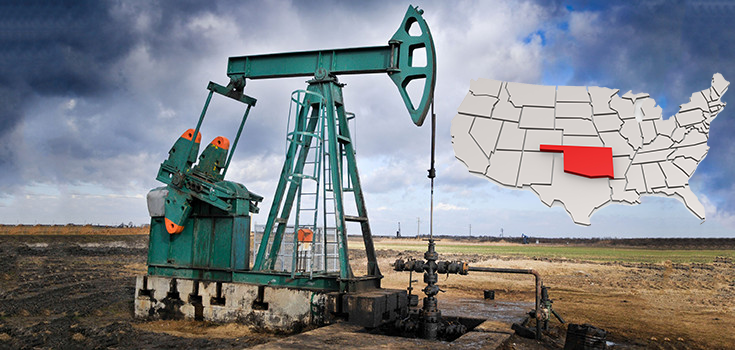Oklahoma Sees 2800% Increase in Earthquakes over 5 Years – Here is Why

Earthquakes used to be more of a rarity in Oklahoma. An average of 2 quakes typically shook the state in a year’s time. But that was long ago. Now, the ground rock Oklahomans’ world hundreds of times a year.
In 2014, 585 quakes of a magnitude 3.0 or larger rattled Oklahoma – 3 times the number that rocked California. So far this year, 600 quakes have rattled the area, with the largest being a 4.5 striking the small town of Crescent. Scientists point to oil and gas drilling as the cause. [1]
“It’s completely unprecedented,” said George Choy, a seismologist at the US Geological Survey.
Hydraulic fracturing, or fracking, frees natural oil and gas through the process of blasting chemicals, sand, and water into Shale rock formations. The water produced by fracking is then injected into two separate wastewater wells dug as deep as a mile below the earth. This water can alter pressure along fault lines, causing slips that produce shaking.
Oklahoma has 4,500 disposal wells, and about 3,200 operate on a daily basis.
Many lawmakers and industry experts have been slow to accept fracking as the cause of the violent spike in earthquakes, but the numbers over the years tell the story: there were 20 quakes in 2009, 35 in 2010, 64 in 2011, 35 in 2012, 109 in 2013 and 585 in 2014. As fracking increased, so did the shaking.
“We are the only state where once this problem came up, we just kept going (with fracking),” said Johnson Bridgwater, the executive director of the Oklahoma chapter of the Sierra Club, a prominent environmental group.
“We want public safety to come first, rather than treating this state as a giant lab.”
Multiple small earthquakes hit Oklahoma last week, Friday night into early Saturday morning, according to NewsOn6 in Pawnee, Oklahoma:
“At 11:20 p.m. Friday, a 3.1 magnitude earthquake was recorded just south, southwest of Pawnee and 20 northeast of Stillwater, according to the U.S. Geological Survey. It was about two miles deep.
At 12:44 a.m., another 3.0 magnitude earthquake was recorded just west of Pawnee, and 19 miles northeast of Stillwater. It was about two miles deep.
Several smaller earthquakes were recorded, including a 2.9 magnitude near Cushing at 12:16 a.m., a 2.6 magnitude near Cherokee at 6:18 a.m., and a 2.5 magnitude at 6:26 a.m. near Cherokee.”
Fortunately, no one was injured and no property damage was reported. But what worries many scientists and residents even more than the increase in quakes is the question of whether they’ll get bigger and more damaging.
The answer to that question depends on who you ask. Industry experts, of course, say they won’t. The results of a new study released Friday, however, suggests that things are going to get much worse.
According to researchers, a portion of the state – the area around Guthrie, Langston and Stillwater – are at risk of having a 5.0 earthquake or larger on a weekly basis by the end of the year. [2]
“If a major part or the whole of the GLS (Guthrie, Langston and Stillwater) structure is accidentally re-activated in a low-stress-drop regime by wastewater injection, it is capable of generating a significant earthquake in the range (magnitude) 5.5-6.5 or greater,” Chris Hartnady, a South African geologist, said in the study.
Could the “big one” be right around the corner?
“We are inching every day, closer to a 6.5 or a 7 [magnitude],” said Angela Spotts, with Stop Fracking Payne County. “The buildings aren’t prepared for it, no one’s prepared for it.”
Three wells were shut down Friday following two quakes registering 3.5 and 4.1 struck near Cushing, home to one of the largest crude oil storage facilities in the world, but it might be too little, too late.
The Sierra Club is demanding a moratorium on wastewater injection wells in the 21 Oklahoma counties that have the highest risk for a major earthquake.
Additional Sources:
[1] Live Mint
[2] KFOR
